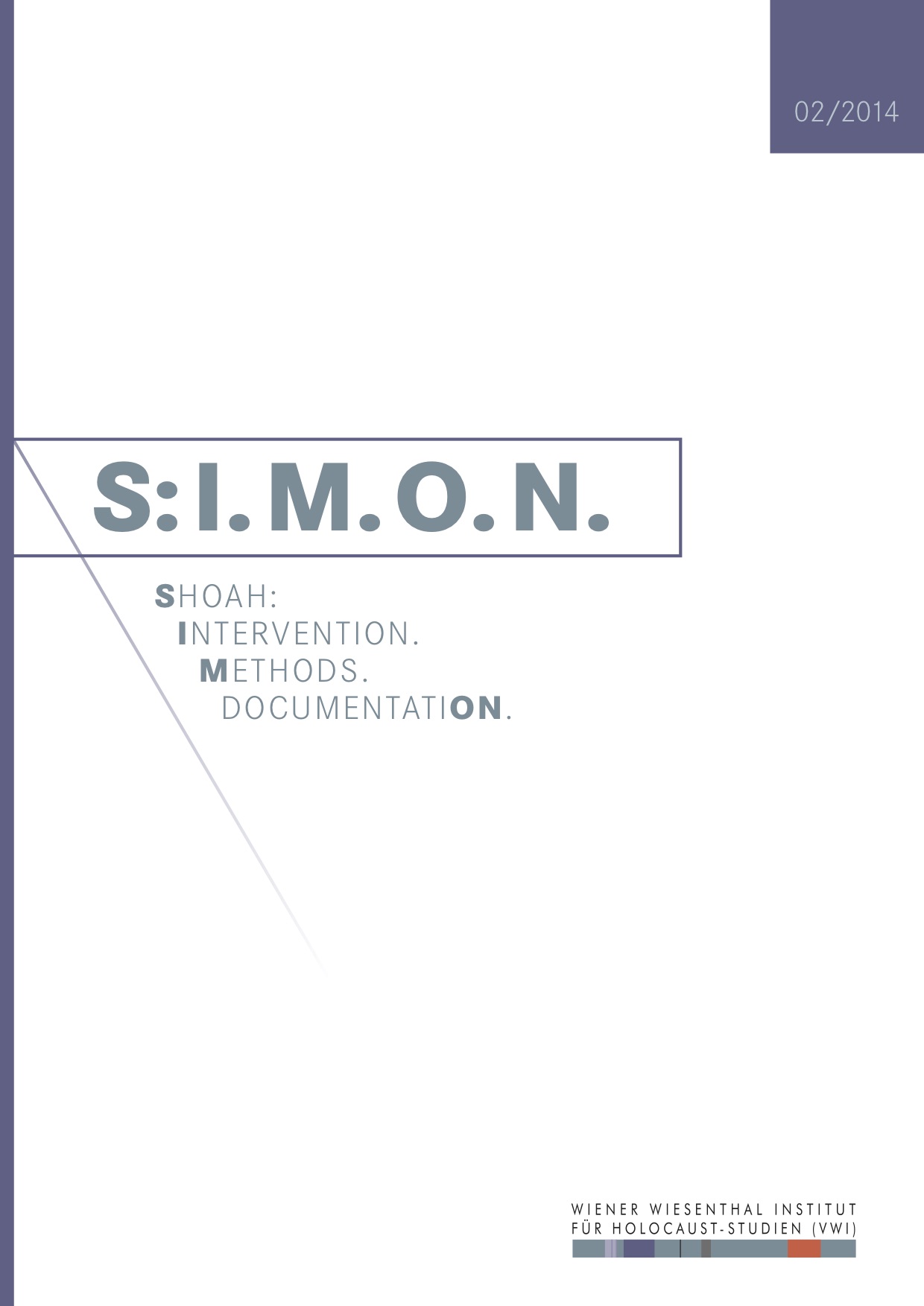Judging the Past - The Use of the Trials against the Members of the Gestapo in Belgium as a Source for Historical Research
Judging the Past - The Use of the Trials against the Members of the Gestapo in Belgium as a Source for Historical Research
Author(s): Robby Van EetveldeContributor(s): Nadezda Kinsky-Müngersdorff (Editor)
Subject(s): Jewish studies, Recent History (1900 till today), WW II and following years (1940 - 1949), Fascism, Nazism and WW II, History of the Holocaust
Published by: Wiener Wiesenthal Institut für Holocaust-Studien
Keywords: criminal investigations; “objective” reconstruction of the past; post-war Belgium; collaborators of NS-Regime; testimonies;
Summary/Abstract: Academic historians have an ambiguous relationship with the use of documents produced in the context of criminal investigations. On the one hand, these documents provide an avalanche of information, often giving a voice to historical actors that would otherwise stay hidden in classical top-down history. On the other hand, academics denounce such documents as inherently biased and thus unfit for use in an “objective” reconstruction of the past. This problem’s urgency increases in the context of a politically tense period such as the immediate aftermath of the Second World War. In post-war Belgium, military courts were responsible for bringing to justice both German officials and Belgian collaborators. This paper identifies the methodological possibilities and problems associated with the use of the documents these courts amassed to this end with regard to research on the Holocaust and the German occupation of Belgium and to history-writing in general. Among others, elements such as the influence of the internal workings of the military court and the legal framework in which it had to operate, the similarities and differences in how historians and prosecutors go about their research, and how defence strategies employed by suspects/perpetrators as well as witnesses/victims twisted their hearings and testimonies, are addressed. The paper concludes that although judicial sources come with inherent limitations, they can be employed in academic history as long as attention is paid to the specific context in which they were produced and they are subjected to proper critical reading.
Journal: S:I.M.O.N. Shoah: Intervention. Methods. Documentation.
- Issue Year: 1/2014
- Issue No: 2
- Page Range: 16-27
- Page Count: 12
- Language: English

